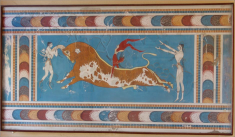Speaker
Description
The PANDA experiment at the future Facility for Antiproton and Ion Research (FAIR) in Darmstadt/Germany aims to investigate fundamental questions of hadron physics. PANDA is designed as a fixed target experiment for an antiproton beam with a momentum range of 1.5 GeV/c to 15 GeV/c. In order to obtain an excellent particle identification of pions and kaons, two independent DIRC detectors have been developed for two adjacent spatial regions. The Barrel DIRC covers polar angles from 22°-140° and performs π/K separation with 3 σ or more for momenta from 0.5 to 3.5 GeV/c. The novel Endcap Disc DIRC (EDD) detector will cover the forward polar angles between 5° and 22° and will provide a π/K separation up to 4 GeV/c with a separation power of ≥ 3 σ. The design of the Barrel DIRC is based on the successful BaBar DIRC and the SuperB FDIRC R&D with several improvements to optimize the performance for PANDA. Both PANDA DIRC detectors use synthetic fused silica as material for radiators and lightguides and lifetime-enhance Microchannel Plate PMTs (MCP-PMTs) as sensors. The Barrel DIRC uses narrow bars as radiator, a prism-shaped expansion volume and a complex multi-layer spherical lens as focusing system. The Cherenkov radiator for the EDD is a large, 2 cm thick fused silica plate that is divided into 4 identical quadrants. A combination of bars and cylindrical elements with aluminum coating focus the Cherenkov light on the MCP-PMTs with segmented anode plates.
The technical design of the two DIRC detectors and the performance of prototypes tested in a mixed hadron beam at CERN will be presented.
